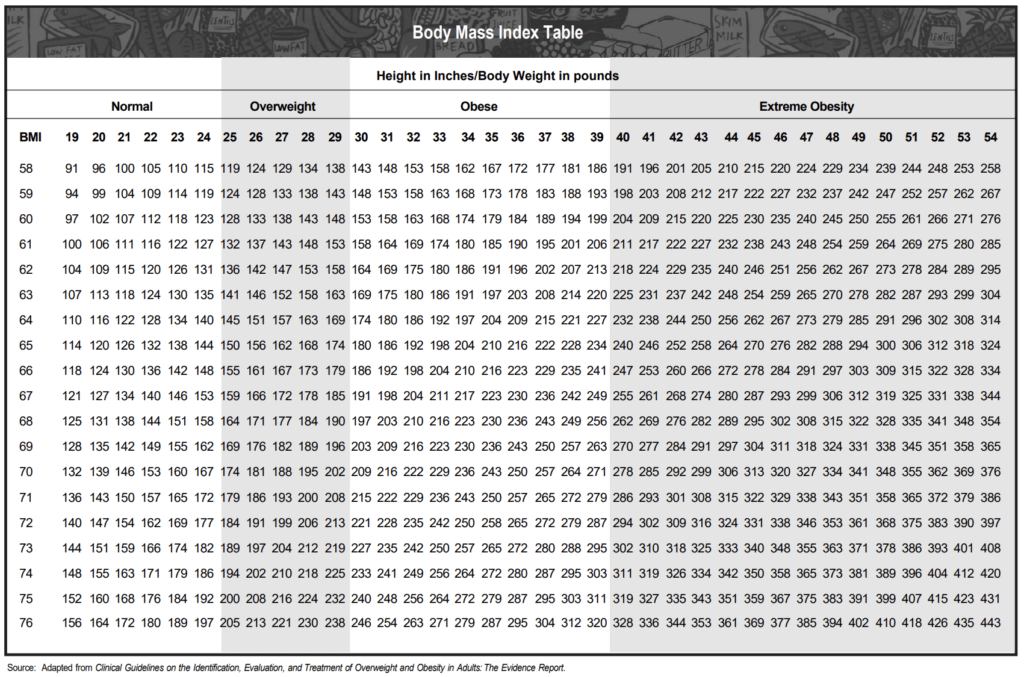What does it truly mean to have a healthy weight? For many, the answer seems simple—step on a scale, check the numbers, and compare them to a chart. But is it really that straightforward? Beneath the surface lies a slew of factors—age, height, body composition, and even the way fat is distributed across your body—all playing a role in shaping your health.
Yet, even the most popular tools and measurements can leave crucial details untold. What if your weight doesn’t tell the full story? What if health isn’t just about numbers? The answer might surprise you, and it could completely reshape the way you think about your body and well-being.
What Does ‘Healthy Weight’ Really Mean?
Determining your ideal weight can feel like an elusive goal, but it’s important to understand that there’s no universal answer. While tools and calculators offer guidelines based on factors like weight for height and age, these tools are not always precise or applicable to everyone. Each individual is unique, and no single formula can perfectly define what an ideal weight should be.
According to research, there is no single measure of body size that can definitively determine your overall health or predict potential health risks. A more holistic approach involves focusing on a nutritious, balanced diet, regular physical activity, and sustainable lifestyle habits, regardless of the numbers on a scale.
Rethinking the Role of BMI
One of the most commonly used tools for assessing weight is the Body Mass Index (BMI). This tool calculates a ratio of weight to height and classifies individuals into categories like underweight, healthy weight, overweight, and obese. While widely used, BMI has its limitations. As noted by the CDC, BMI doesn’t measure body composition or health, and it “should be considered with other factors, such as blood pressure, cholesterol levels, and physical examination.” [1]
For example, high-performance athletes with significant muscle mass often have a higher BMI that might categorize them as overweight or obese, despite their excellent physical health. Similarly, variations in bone density, body fat distribution, and genetic factors make BMI a general screening tool rather than a definitive health measure.

Health Risks and Weight Considerations
Some experts argue that individuals with obesity, even without related health conditions, may still face increased long-term risks of developing conditions such as metabolic syndrome or cardiovascular disease. Research suggests that body weight does have correlations with certain health outcomes, but it’s only one piece of the puzzle.
Speaking with a doctor or healthcare provider is essential for a complete picture of your current health status. Personalized consultations can help identify potential risks and offer tailored strategies for health improvement that go beyond the numbers on a scale.
How Much Should You Weigh for Your Height?
Determining the ideal weight for your height involves more than just stepping on a scale – it’s about understanding the relationship between your weight and height through a measure known as Body Mass Index (BMI). BMI is a widely used tool to categorize different weight ranges and assess health risks associated with body mass.
To calculate your Body Mass Index (BMI), you can use the following formulas depending on the units you prefer:
- Metric Units: Divide your weight in kilograms (kg) by your height in meters (m) squared.
Formula: BMI = weight(kg) / height(m)² - Imperial Units: Multiply your weight in pounds (lbs) by 703, then divide the result by your height in inches (in) squared. The formula presented in a straightforward text format is:
Formula: BMI = (weight(lbs)×703) / height(in)²
The BMI values are divided into categories that help identify whether a person is underweight, at a healthy weight, overweight, or obese. These categories are standardized and recognized globally:
Underweight: A BMI less than 18.5 indicates that you are underweight. Being underweight can be a sign that your body isn’t getting enough nutrients, and it may lead to health issues such as osteoporosis, decreased immune function, and anemia.
Healthy Weight: A BMI between 18.5 and 24.9 is considered healthy. This range is associated with living the longest, the lowest incidence of serious illness, and being well-suited to sustain common physical activities without excess body fat.
Overweight: A BMI between 25 and 29.9 classifies you as overweight. Being overweight can predispose you to numerous health conditions, including heart disease, high blood pressure, and type 2 diabetes.
Obesity: A BMI of 30 or higher places you in the obese category. Obesity is linked to a number of serious health conditions, including heart disease, diabetes, and increased risk of certain cancers. Managing obesity often requires a combination of diet, exercise, and sometimes medical intervention.
For a detailed view of where your BMI falls in relation to standard categories, you can refer to the comprehensive Body Mass Index table provided by the National Institutes of Health (NIH) below. [2]

It’s important to note that while BMI is a useful tool for assessing weight in relation to height, it does not directly measure body fat, and it may not accurately reflect the health status of individuals with muscular builds. Therefore, it should be used as a general guide rather than a definitive indicator of individual health.
How Much Should You Weigh According to Age?
As we progress through different stages of life, our bodies undergo significant changes that affect weight, body composition, and overall health. Understanding these changes can help you determine a healthy weight as you age.
From our 30s onward, it’s common for body fat to increase, particularly around the midsection, while muscle mass generally decreases. This change in body composition is due to a slowdown in metabolism and changes in hormone levels, which affects both men and women, albeit differently.
Men and women not only experience aging differently but also have distinct body compositions due to genetic and hormonal differences:
Men: Typically, men have higher levels of testosterone, which helps maintain higher muscle mass and lower body fat. This hormonal advantage means men often have a different body fat distribution compared to women, tending to carry less fat mass for the same BMI.
Women: Premenopausal women often store fat in their lower body, such as the hips and thighs. However, after menopause, women’s fat distribution shifts to be more like men’s, concentrating around the abdomen, making them more apple-shaped. This change is due to a decrease in estrogen levels, which significantly impacts where body fat is stored.

Considerations for Different Ages and Genders
Children and Adolescents: Growth charts from the (CDC) provide weight recommendations based on age, gender, and height for children and adolescents. These charts are useful for monitoring growth patterns and ensuring that young individuals are maintaining a weight appropriate for their developmental stage. [3]
Adults: For adults, maintaining a BMI within the healthy range (18.5 to 24.9) is advisable, but it’s important to consider how body fat distribution changes with age. Adults should aim to keep waist circumferences within recommended limits (less than 35 inches for women and less than 40 inches for men) to lower the risk of health issues associated with visceral fat, such as cardiovascular diseases and diabetes.
Older Adults: In older adults, a slightly higher BMI might be protective to some extent, but maintaining physical activity to preserve muscle mass and prevent frailty is crucial.
Given these variations, weight management strategies should be tailored not only based on age but also considering gender-specific biological changes. Regular physical activity, strength training, and a balanced diet rich in nutrients can help manage weight and muscle mass effectively throughout the aging process.
Additionally, regular health screenings and consultations with healthcare providers are vital to adapt health strategies to one’s changing body and lifestyle needs.
My Personal RX on Achieving and Maintaining a Healthy Weight
As a doctor, I believe that a healthy weight is about balance—not just in your diet and exercise, but in how you approach your overall well-being. Here are my go-to tips, inspired by both science and experience, to help you on your journey:
- Start with Small, Consistent Changes: Commit to sustainable habits, like replacing sugary drinks with water or adding a 15-minute walk to your day. These small actions compound into long-term success.
- Support Your Gut Health: A healthy gut is essential for effective weight management and overall wellness. Dive into resources like the Gut Brain Book to understand how the gut-brain connection impacts both physical and mental health.
- Control Cravings Naturally: If cravings are holding you back, consider supplements like my MetaBurn, designed to support weight loss and reduce those tough-to-manage urges.
- Make Your Plate Colorful: Incorporate a variety of colorful vegetables and fruits into your meals. They’re packed with nutrients that fuel your body and keep you feeling full longer.
- Embrace Mindful Eating: Slow down during meals. Take time to savor your food, and pay attention to hunger and fullness cues to prevent overeating.
- Move in Ways You Enjoy: Whether it’s yoga, gardening, or a brisk walk with your dog, efind activities you love. Consistency trumps intensity for long-term success.
- Prioritize Sleep: Poor sleep can derail your weight goals by increasing cravings and disrupting your metabolism. Aim for 7–9 hours of quality sleep each night.
- Learn to Manage Stress: Stress can lead to emotional eating and weight gain. Practice relaxation techniques like meditation or deep breathing to stay in control.
- Stay Educated: Knowledge is empowering. Heal Your Gut, Save Your Brain offer insights into holistic strategies for improving health from the inside out, targeting the gut-brain axis.
- Seek Professional Guidance: Regular check-ins with a healthcare provider ensure your approach is tailored to your body and your goals. Don’t hesitate to ask for help if needed.

Sources:
- About Body mass index (BMI). (2024, May 20). BMI. https://www.cdc.gov/bmi/about/index.html
- Body Max Index Table. (n.d.). National Institutes of Health. https://www.nhlbi.nih.gov/health/educational/lose_wt/BMI/bmi_tbl.pdf
- Growth Charts – Clinical growth charts. (n.d.). https://www.cdc.gov/growthcharts/cdc-charts.htm











 Subscribe to Ask Dr. Nandi YouTube Channel
Subscribe to Ask Dr. Nandi YouTube Channel










